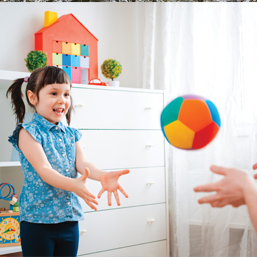
While the term literacy has been part of the educational landscape for decades, the concept of Physical Literacy only became mainstream during the latter part of the last decade. If you are like me, you probably had no idea what it was, exactly, and many parents still struggle to understand the concept and how it might apply to their child’s learning landscape.
When hearing the term literacy, one typically thinks of reading and writing - the CanLearn Society describes literacy as “having knowledge or skill in a specified field.” Physical Literacy is no different than any other form of literacy. It is a process with foundational building blocks that require exposure, repetition, and nurturing. By developing reading, writing, numeracy, and physical literacy skills, children learn to access information and communicate with the world around them. Sport Australia describes Physical Literacy as “building the skills, knowledge, and behaviors to help us lead active lives. It is the holistic learning that occurs through movement and physical activity and integrates physical, psychological, social, and cognitive capabilities.”
Your child’s Physical Literacy journey is unique to them and will develop and change throughout their lifetime. One thing that can’t be denied is the more experiences and opportunities you give your child to move their body and learn skills at an early age, the greater the opportunities they will have to participate in a variety of sports, recreation, and daily living activities without boundaries or barriers.
The best way to explain what this looks like in a real-world situation is to share my own experiences with Physical Literacy. Starting from a young age, I was a gymnast, played soccer, took swimming lessons, learned to skate, tobogganed, and hiked. I feel like I had a ‘typical’ childhood growing up in Calgary. As a young adult, I was active in sports throughout school. Now, as a mother in her 40s, I can still beat most teens in a handstand contest! I have no problem climbing ladders and standing on my roof to clean the gutters. I love to play at the park with my children. So, what’s missing? I must be doing well on my own Physical Literacy journey, right? Yes, but there is a giant hole, a missing piece from my childhood experiences: I never learned how to throw. Ask anyone who knows me, and they will tell you that I look like a T.rex when attempting to throw almost anything.
What has this meant for me? I have spent a lifetime avoiding anything where I must throw something: in sports, games, and activities alike. I cringe when my husband says to me, “Throw me the keys.” Something so simple, a skill so easily learned - a skill I missed learning. It’s never too late for me to learn, but it also means I’ve had 40 years of missed opportunities.
How do you avoid your child becoming a 40-year-old T. rex like me? Help them develop Fundamental Movement Skills and give them a multitude of experiences in a variety of environments to practice and gain confidence. The development of Fundamental Movement Skills is equivalent to learning your ABCs and 123s. They are skills that build upon basic human movements, such as sitting, rolling, crawling, and walking. Fundamental Movement Skills involve agility, balance, coordination, and object manipulation skills.
Here are the four domains within the Physical Literacy framework and many of the resulting benefits to your child:
1. Physical. Physical benefits include, but are not limited to, movement skill competencies, balance, coordination, agility, and object manipulation.
2. Psychological. Engaging in physical activity positively affects the development of self-regulation, self-perception, and confidence.
3. Social. Fosters cooperation and positive peer relationships, and a sense of personal responsibility.
4. Cognitive. Supports the development of executive functioning in the early years, such as reasoning, planning, and risk management.
Tips and resources to support your child’s Physical Literacy journey
Give your child opportunities to engage in structured, unstructured, and risky play. Ensure the activities and/or equipment are developmentally appropriate:
For more resources on how to support your child’s Physical Literacy journey, visit physicalliteracy.ca, activeforlife.com, and sportforlife.ca.
Being physically active offers innumerable benefits to your child’s growth and development; benefits that will continue with them throughout their life and create opportunities rather than obstacles. Give your child the gift of movement - their journey starts with you.
Mairin is a Consultant for WordPLAY Consulting Ltd., wordplaycanada.com, a third-year Physical Literacy student at MRU, a sport and recreation educator, mother of three active children, and a lover of all things movement related.
Calgary’s Child Magazine © 2024 Calgary’s Child